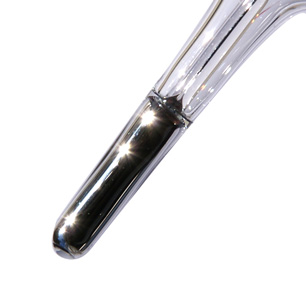Mercury
| EPA Maximum Contaminant Level (MCL) |
0.002 mg/L |

Mercury (Hg) is one of earth's least abundant elements. It is often used in the manufacture of electrical products, fluorescent light bulbs and dry-cell batteries. Although it occurs naturally in the earth's crust, it enters the environment mainly through human activity—coal burning, industrial processes, waste incinerators and the mining of mercury, gold and other metals.
It exists as an inorganic salt or as an organic compound. It is the inorganic type that is detected in drinking water; organic mercury is sometimes found in fish and shellfish, a result of industrial manufacturing waste.
Health Effects of Mercury
Inorganic mercury, if ingested, usually settles in the kidneys; organic mercury attacks the central nervous system.
According to the EPA, kidney damage is the main health concern in both short and long term exposure:
Some people who drink water containing mercury well in excess of the maximum contaminant level [0.002 milligrams per Liter] over many years could experience kidney damage.
Water Treatment for Mercury
Mercury is easily removed from water by activated carbon filtration. Reverse osmosis removes 95 to 97%.
Water Technology also suggests distillation, ion exchange, sulfide precipitation, or starch xanthate as treatment methods.
Sources: EPA (1), EPA (2), Water Technology, Photo: images-of-elements.comA
Site Index
Filtration Systems
- Aeration for Iron & Sulfide
- Backwashing Filters
(whole house & well units)
- Chlorine & Chemical Injectors
- Countertop Water Filters
- Emergency Filters
- Garden Hose Filters
- Reverse Osmosis, Residential
- Reverse Osmosis, Commercial
- Shower Filters
- Specialty Filters
- Ultraviolet Systems
- Undersink Filters
- Water Softeners
- Whole House Filters
Cartridges
Parts
- Replacement Parts
- Faucets
- Filter Media
- Fittings
- Housings
- O-rings
- Pumps
- Pura UV
- R.O. Parts
- R.O. Tanks
- R.O. Booster Pump
- VIQUA UV